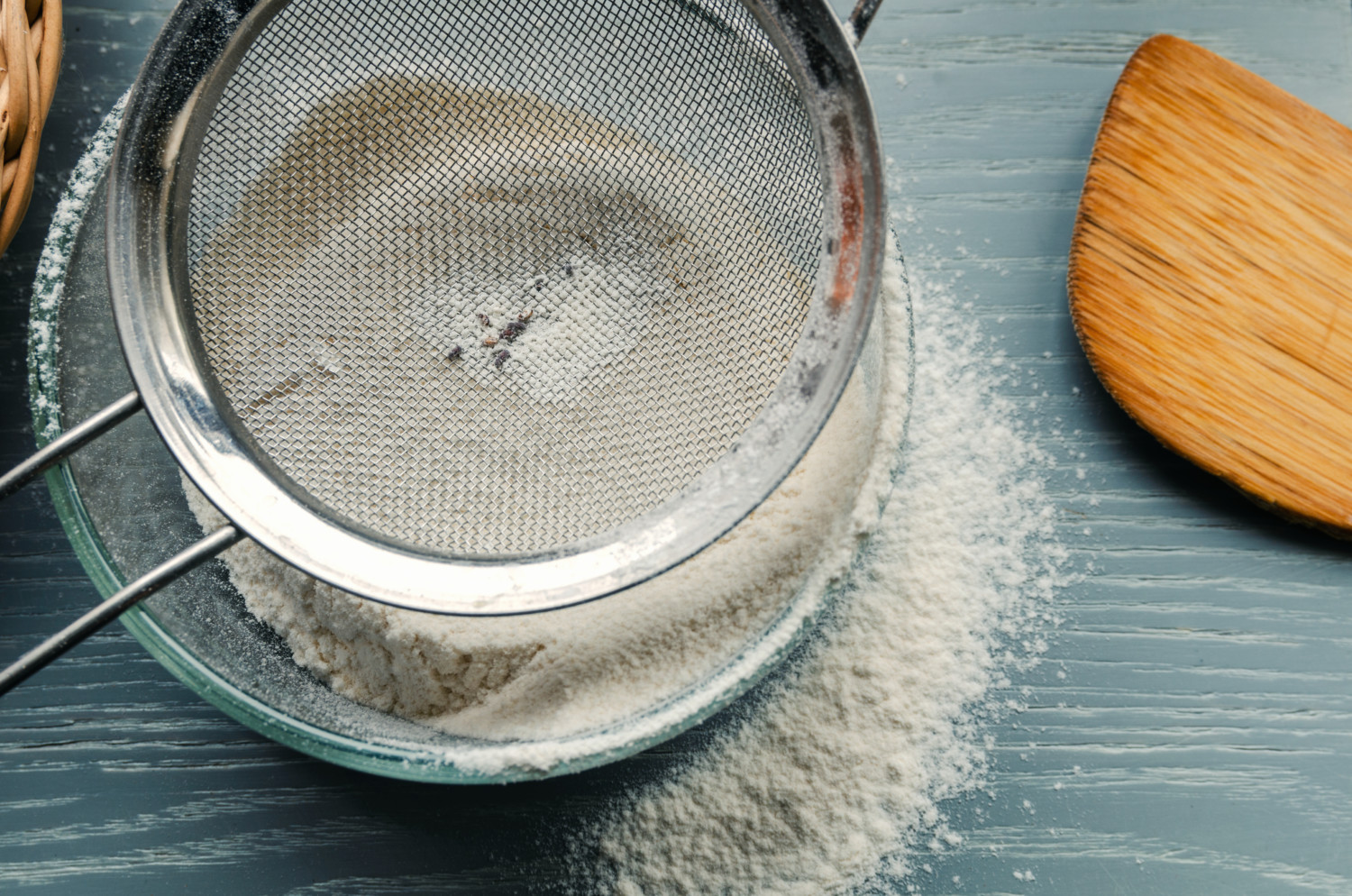Dipping a spoon into a bowl of raw chocolate chip cookie dough or licking beaters coated in cake batter is a core memory of childhood baking for many people. So is hearing, “You shouldn’t eat that; it can make you sick!” However, raw eggs are not the only (or even, perhaps, primary) culprit driving these warnings.
While it’s common knowledge that eggs are safest eaten cooked, is raw flour safe to eat?
Can You Eat Raw Flour?
Flour straight out of the bag might not seem like raw food, but it should be considered raw until it is cooked or baked. And there are a couple of reasons why you might not want to consume uncooked flour. The first is not necessarily harmful but could undoubtedly be unappetizing.
Several pantry bugs are known to infest flour, such as cigarette beetles, drugstore beetles and flour beetles, as well as Indian meal caterpillars and moths, especially when flour is stored for a long time and not properly sealed.

While the notion of creepy, crawly critters in the flour might be enough to turn your stomach, there is another, more harmful reason you should avoid eating raw flour. Since it hasn’t been treated to kill germs, eating uncooked flour poses some of the same dangers as consuming other raw foods, such as E. coli, salmonella, listeria and other bacteria that cause food poisoning.
Grains can become contaminated by these germs while they are still in the field or when they are being processed to make flour. In addition, wheat fields attract insects, wildlife, rodents, livestock and birds. Bacteria from animal waste can carry pathogens that can contaminate human foods and make you sick.
Wheat or other grains are milled until they have the powdery consistency we know as flour. Although the milling process includes cleaning, the goal is to remove the outer layers of the kernels and remove unwanted objects, such as stones or other foreign objects. The mechanical process does not address any microbial pathogens. Even bleaching, which is sometimes part of the refining process, does not kill the harmful germs.

Have People Gotten Sick From Eating Raw Flour?
It might surprise you to learn that the U.S. Centers for Disease Control and Prevention have investigated outbreaks of E. coli infections linked to raw flour or cake mix several times in recent years, including the following cases:
- In 2016, there was a multistate outbreak of E. coli infections linked to flour, during which 63 people were infected across 24 states. Of the ill people, 17 were hospitalized and one person developed hemolytic uremic syndrome, a type of kidney failure that can be life-threatening. No deaths were reported.
- In 2019, 21 people across nine states were infected with E. coli contracted from flour, with three hospitalizations and no deaths reported. Authorities determined several brands of flour to be the source of the outbreak, including King Arthur and Pillsbury.
- In 2021, 16 people across 12 states became ill from an E. coli outbreak linked to cake mixes, with seven people ending up in the hospital.
E. coli can cause illnesses that are sometimes severe, such as diarrhea, urinary tract infections, respiratory illness and bloodstream infections. In addition, according to the CDC, approximately 5-10% of people diagnosed with a specific type of E. coli will develop hemolytic uremic syndrome.

Can You Safely Eat Raw Flour At All?
You probably wouldn’t ever grab a handful of flour and start snacking, but think of some instances when you might have consumed it. You eat raw flour in things like cookie dough and cake batter, for example. And if you have ever made homemade playdough for your little ones, there is a good chance that they will give it a taste.
But if you really want to indulge in some safe, edible cookie dough or make some colored dough for your kids to play with, you can toast the flour first to kill germs.
To do this, spread two cups of flour on a baking sheet and bake at 350 degrees Fahrenheit for about 5 minutes. Allow it to cool completely, and then you can safely use it in recipes or craft projects that might be ingested. Note that toasting flour does give it a nuttier taste, although many people find that delicious.

Other Tips For Handling Flour Safely
It is best not to taste or eat anything containing raw flour and to wash your hands, bowls, utensils and countertops after handling raw flour or dough. Also, follow the directions for correct cooking times and temperatures on packages of baking mixes and other products containing flour.
Keep all raw foods separate from ready-to-eat foods, including flour. Keep dough refrigerated when it’s not in use. If you ever have flour that is part of a recall, throw it away immediately. Don’t use raw flour or products containing raw flour, like cake mix or raw cookie dough, to make milkshakes or homemade ice cream.
This story originally appeared on Simplemost. Checkout Simplemost for additional stories.


